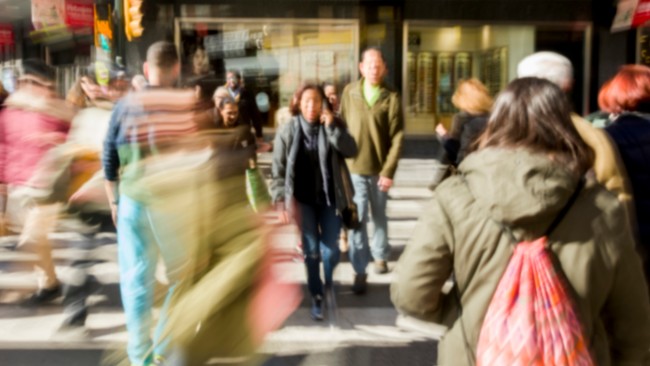Gentrification sparks debate wherever it takes root. You might see empty storefronts replaced by trendy cafés, drawing fresh crowds into once-forgotten neighborhoods. Property values soar, giving some longtime homeowners a chance to profit.
At the same time, you witness families pushed out by rising costs and cultural gems swept aside in favor of upscale boutiques. This process involves gains and losses that affect urban landscapes worldwide.
Here in this article, we will discuss both the pros and cons of gentrification and its far-reaching impact on today’s ever-changing cities.
Pros of Gentrification
1. Rising Property Values
Homeowners can see a sharp increase in their property’s worth when gentrification takes hold. If you’ve lived in a house for years, the boost in equity can offer financial stability. You might refinance, invest in home improvements, or even sell at a profit.
By transforming undervalued areas, developers often revitalize old buildings, raising both the appeal and price of the surrounding properties. This upward trend can also help local governments collect higher tax revenue, which might lead to better schools, stronger public services, or more robust local development.
2. Enhanced Local Services
Public and private investments tend to flood neighborhoods that undergo gentrification. You might spot new bus routes, bike lanes, and enhanced sidewalks. More funds often go toward improving libraries, community centers, and health clinics. These upgrades don’t exclusively benefit the newcomers.
Many longtime residents gain easier access to healthcare, recreation areas, and safer roads. As an area’s image improves, city officials pay more attention, sometimes tackling issues that were neglected in the past, such as inadequate street lighting or poor trash collection.
3. Job Growth and Economic Activity
When fresh businesses move in, they create jobs for both skilled and entry-level workers. You might see a new café hiring baristas, a refurbished hotel hiring staff, or a co-working space inviting entrepreneurs. This wave of enterprise can encourage you or your neighbors to start your own small ventures.
Even older shops may expand their product lines to match the evolving customer base. The rise in economic activities broadens tax revenues for local governments, enabling them to reinvest in the community.
4. Reduced Crime Rates
Revitalized streets are often better lit and more frequented by pedestrians, creating a natural deterrent to certain types of crime. With higher property values at stake, police presence may also intensify, giving a further sense of security.
Community watch programs can flourish when newcomers and current residents unify around a shared goal of safety. This combined effort sometimes spurs reduced drug trafficking or vandalism in places that once struggled with high crime rates.
5. Rejuvenated Urban Spaces
You might see abandoned factories turn into vibrant art studios or lofts, drawing in creative minds. Parks that once sat in disrepair can get a makeover. These changes bring fresh energy and possibilities.
Local festivals, farmers’ markets, and cultural showcases may pop up in once-quiet zones, making the neighborhood more appealing for both residents and visitors. Such events help create a new sense of identity and pride in a place that was previously overlooked.
Cons of Gentrification
1. Displacement of Longtime Residents
Property owners benefit from high values, but renters and lower-income households often pay the price. If you rely on affordable rent, steep increases can force you to move elsewhere, sometimes far from your job or community ties.
Seniors on fixed incomes may struggle to cover rising taxes, leading them to uproot from homes they’ve occupied for decades. Displacement also disrupts families, separating children from their schools and friends, creating a ripple effect that affects entire social networks.
2. Loss of Cultural Identity
Local traditions and unique flavors can fade when neighborhoods cater to a wealthier crowd. You might see authentic family diners replaced by trendy restaurants that target tourists or higher earners.
Over time, the district’s original charm and cultural richness can get diluted as more mainstream or luxury businesses move in.
Long-standing community bonds dissolve when cultural landmarks vanish, leaving behind a neighborhood that feels less like home for those who built its character.
3. Widening Socioeconomic Gaps
While some residents gain prosperity, others face escalating costs and financial stress. This can deepen the divide between the “haves” and “have-nots.” You might observe two blocks in the same neighborhood developing at entirely different speeds.
Tensions grow if newcomers overlook the challenges faced by existing residents. Unequal access to jobs, resources, and amenities can spark resentment, protests, or conflicts, reflecting deeper issues tied to race and class inequalities.
4. Erosion of Community Bonds
Neighborhood life often revolves around shared history, traditions, and routines. As families and small businesses get priced out, you lose the everyday social fabric that held everyone together.
Block parties, casual greetings among neighbors, and generational attachments can fade. You might experience a sense of isolation if you remain in a changing community that no longer feels familiar.
The resulting breakdown of trust makes it harder to address shared concerns or collaborate on local improvements.
5. Conflict and Protest
Rapid neighborhood transformation can lead to disputes over zoning laws, business permits, or housing regulations. Residents who feel ignored may rally through demonstrations, petitions, or community organizing.
Tensions spike if government officials seem to side with developers at the expense of the locals. You might witness open hostility directed at newcomers, graffiti tags condemning “yuppies,” or legal challenges to new construction.
These conflicts eat away at social harmony, making it tough for everyone – both newcomers and old-timers – to find a balanced way forward.
Conclusion:
Gentrification can spur growth and investment, but it also disrupts lives and traditions. You see neglected neighborhoods gain improved services, yet longtime residents face displacement.
It revitalizes streets and lowers crime, but it often dilutes a community’s cultural fabric. Communities that engage with every voice stand a better chance of enjoying the benefits of growth and possibility without losing the vibrant spirit that made them unique.
Also Read:

